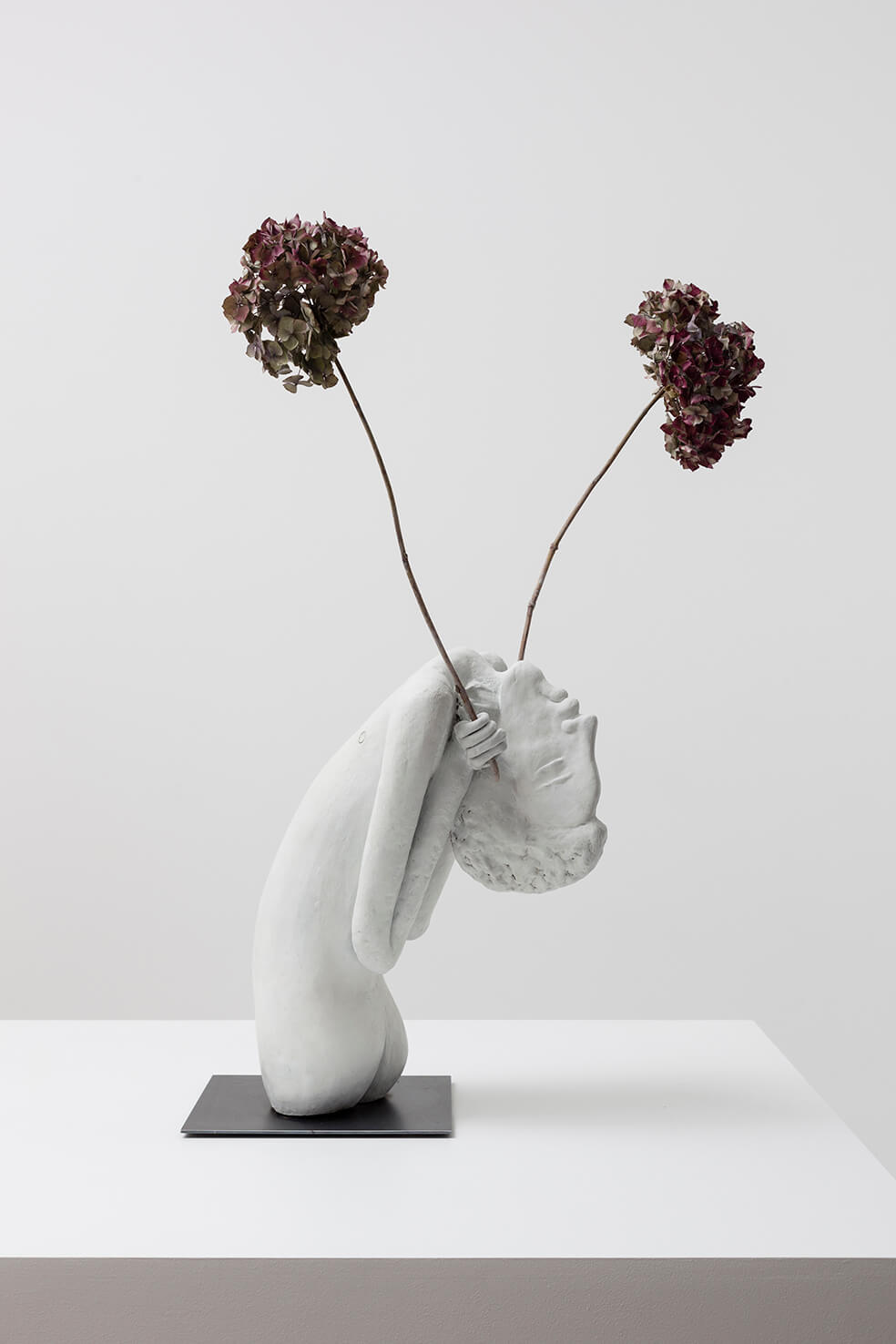The recent sculptures I have been making are self-contained figures in unfired clay. The gestures focus on holding and presenting, often activating the figures by placing flowers in their grasp. This intensifies the sense that the objects are performing for or gesturing towards the viewer, presenting the dried flowers. They display their physical vulnerability while remaining controlled and balanced.
I meet Mark Barker at his studio in Peckham. The conversation fires up and we jump from one topic to another. Mark has a quick mind and, he says, a slow hand. He tells me that it takes him a long time to create work and that his current working process involves a regular dialogue between drawing and sculpture. We discuss his ideas and current readings informing his work, his interest in material experimentation and projects for the future.
Barker graduated from the Slade in 2007. He studied in the painting department but became frustrated because he was more excited about the preparatory drawings than their translation into paintings. The canvas became limiting when his attention was turning to form and body posture. Barker has used different media, including video, to study the performing figures. Acting props, ritualized gestures and activities based on the everyday as well as body relationships have become Barker’s lexicon.
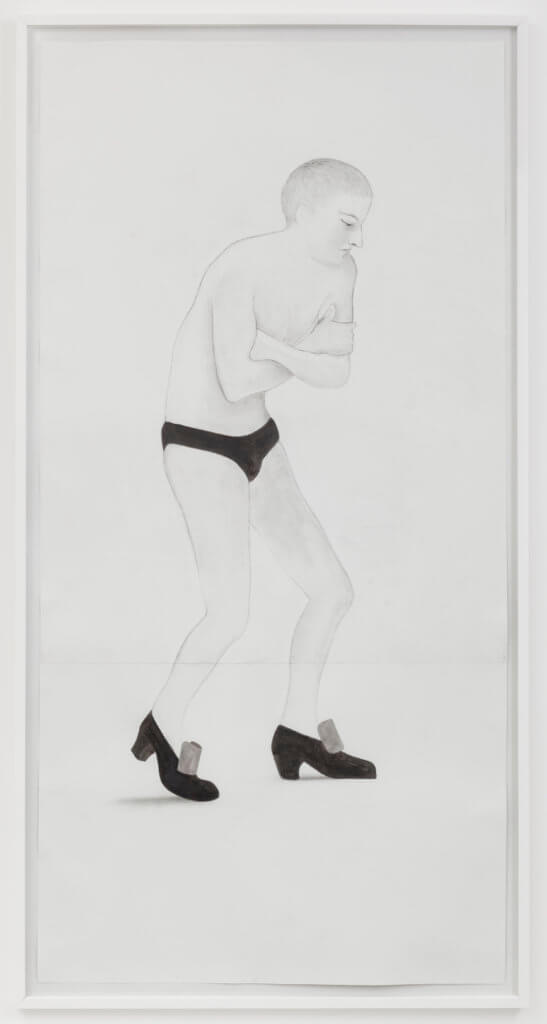
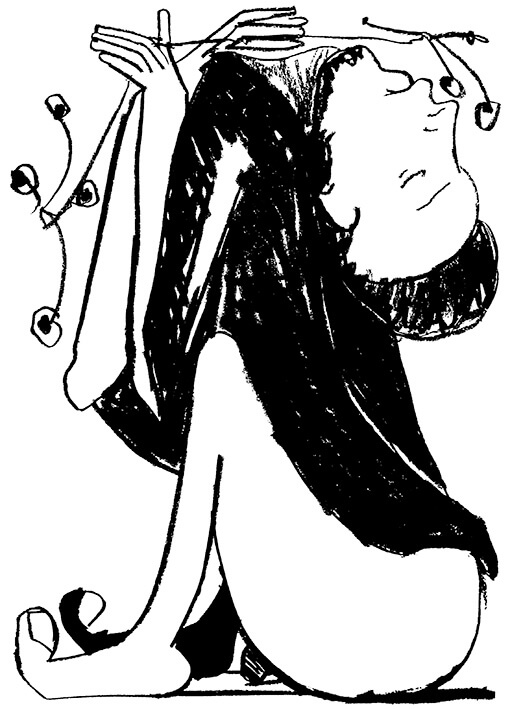
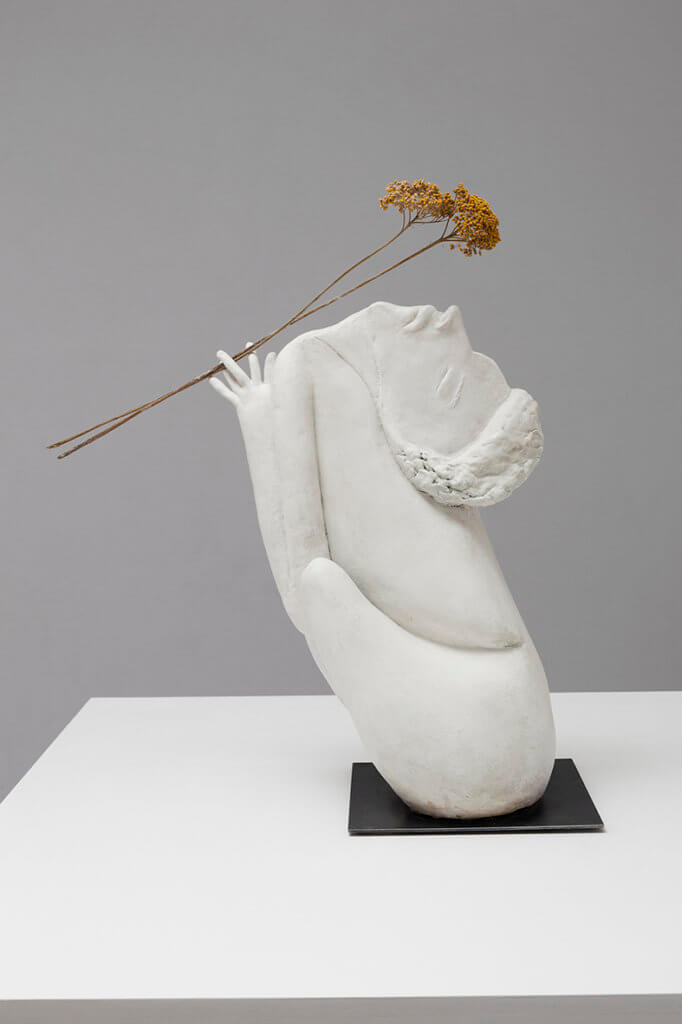
Whilst Barker’s current focus is on sculpture, drawings are always the starting point to prepare for a work. Equally, drawings are a constant compass that he returns to to explore further enquiries into body gestures: how far back a neck can go; what does the repetition of a coiled motion do to a body; how much a facial expression can be pushed before a state of trance gives away into a flat emotion. This back and forth between drawing and sculpture seems to merge the aesthetics of both mediums, giving the sculptures a blade-like quality, reminiscent of Giacometti’s frail figures. Some drawings stand on their own right, as well as being studies, extending the forms of the sculptures. Their broken necks and spiraling guts… exhibit a natural internal logic. Through repetition, they construct their own dynamic. As impossible entities as they would be in real life, these bodies operate in a coherent way and are confident despite their vulnerable quality.
The allegorical potential of the work is rich with ideas of ritual, catharsis and death as a joyful transit. Whilst the artist is not referencing any belief system, I cannot help but think of the religious tradition of stone and wood carving which inspires audiences to feel the near-mystical experience of Christ on his dead bed, saints going through martyrdom and virgins experiencing the ecstasy of God’s love. The gesture of the broken neck in Barker’s sculpture, for example, seems to oscillate between elation and despair, between life and death. The figures are offering dry plants; a metaphor of the memento mori.
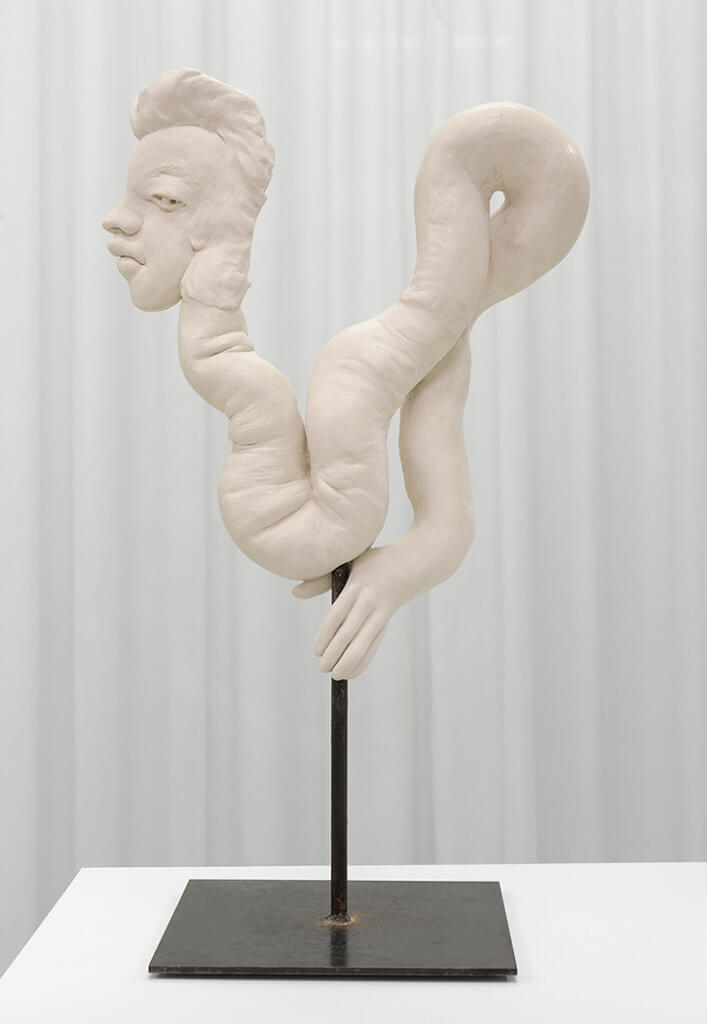
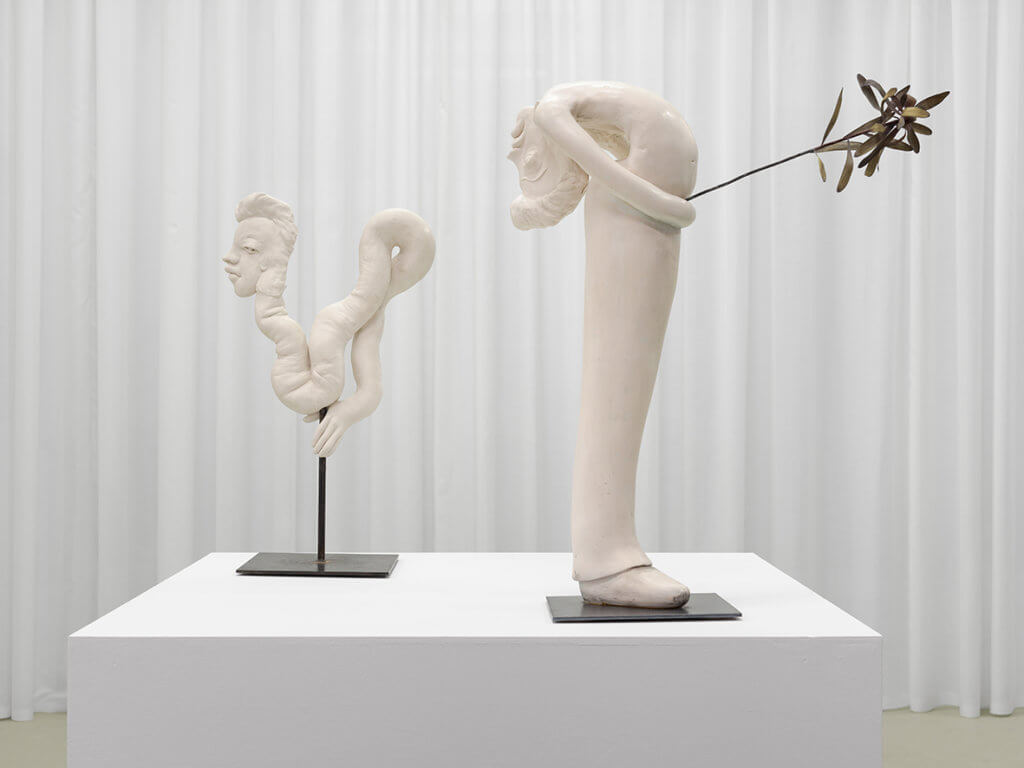
Recently, I was in a show at Peles Empire in Berlin where for the first time I presented two works cast in Jesmonite. The use of this medium was a revelation and the sculptures took on bone-like qualities, as if the works had been carved from the left-overs of a corpse.
Working with Jesmonite, which inherently has a pasty white finish, Barker accentuates the physical experience and our fascination oscillating between the elegant and regal poses and the abject. The figures may look bruised, hinting at a dark narrative, but also resilient and celebratory. Hand-crafting these bodies in unfired clay is a delicate task. Barker speaks energetically about experimenting with materials, polishes and finishes as he is part of a residency at Troy Town Art Pottery, dedicated to ceramics.
Whilst there seems to be a young generation of artists working on a return to the body and a return to figuration in different ways and media, there are not many artists facing head-on a long-standing tradition of classical sculpture. Without nostalgia, Mark Barker takes on the challenge of studying the body. Following centuries of delving on its formal qualities and its potency as a subject matter, Barker aligns with a lineage of masters. Renditions to trivial physical gestures hold the weight of timeless expressions of life and death, joy and sorrow.
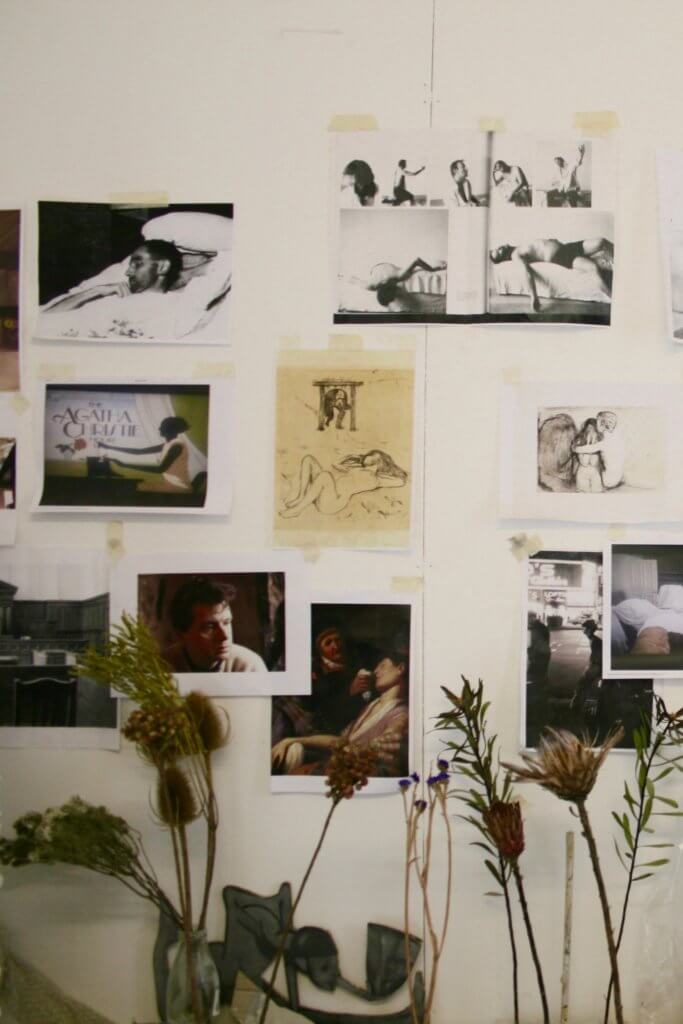
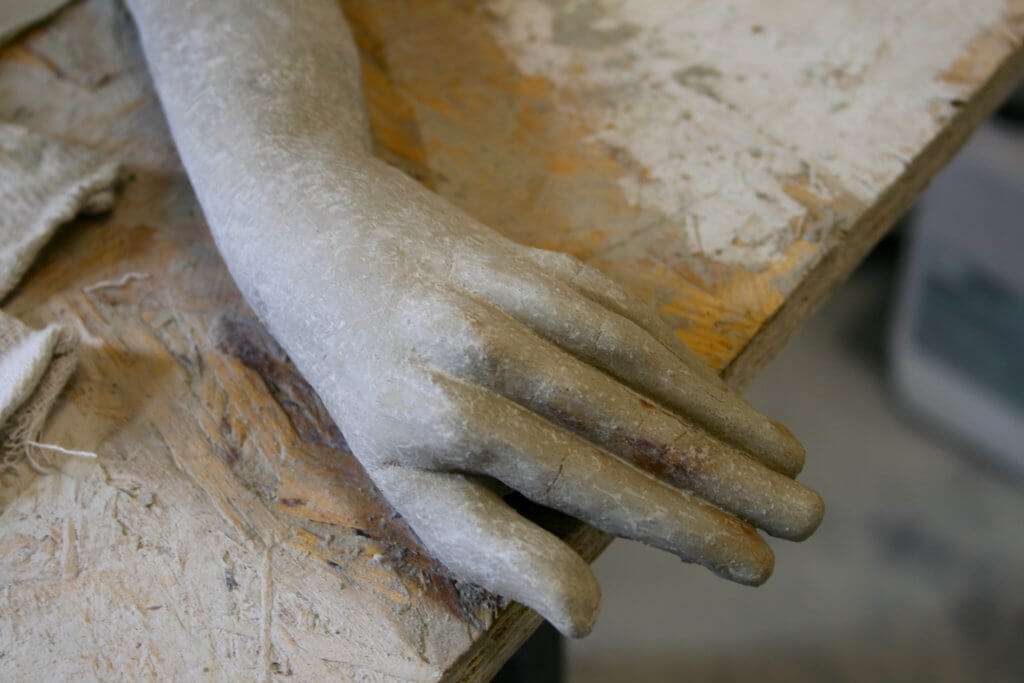
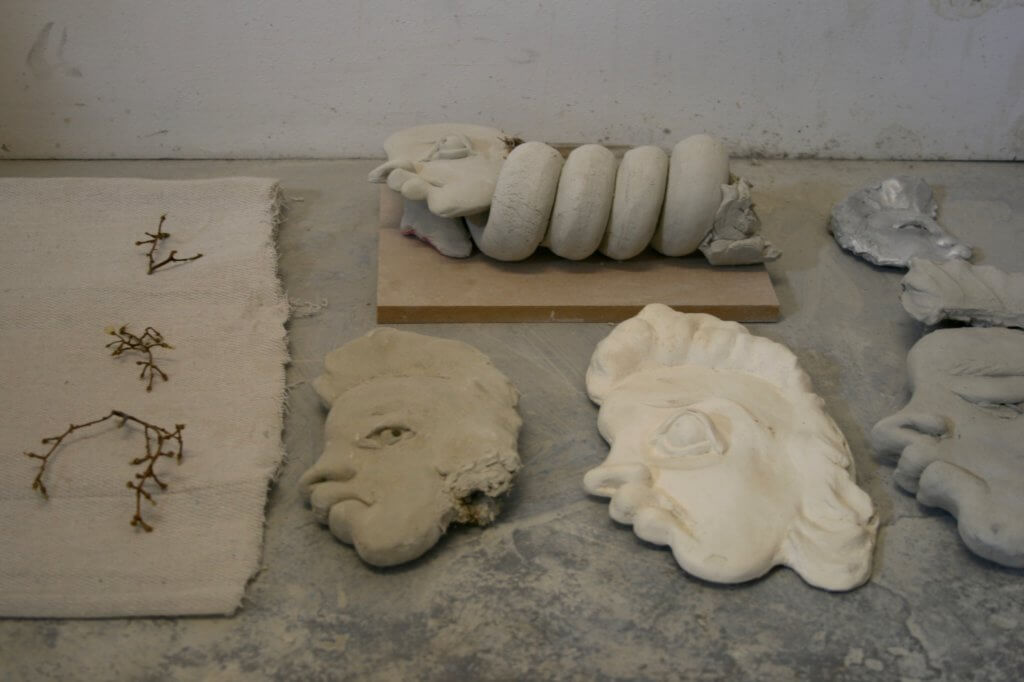
Mark Barker is represented by Southard Reid, London.

